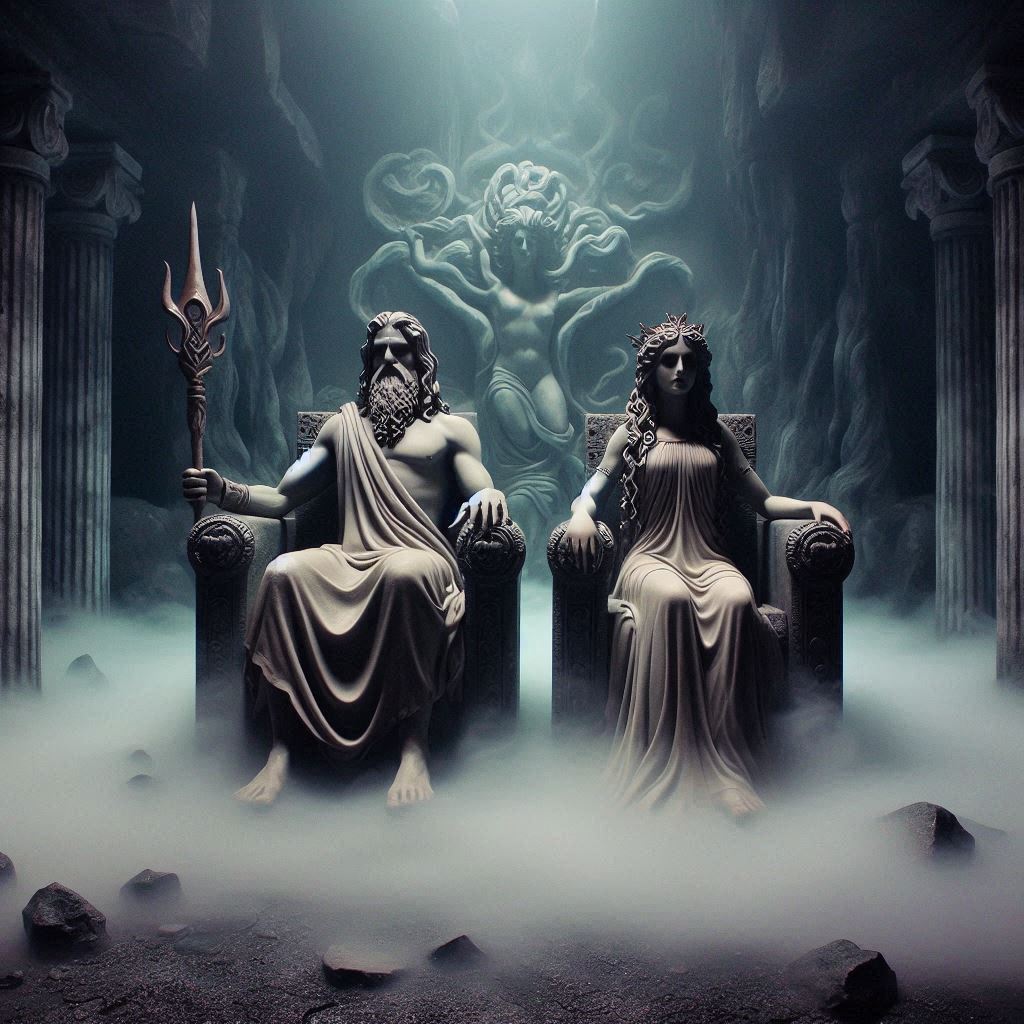The myth of Hades and Persephone is one of the most enduring stories in Greek mythology, capturing the imagination of generations with its themes of love, power, and the changing seasons. This ancient tale not only explains the natural cycles of life but also offers a profound reflection on the balance between life and death, joy and sorrow, and freedom and captivity. In this blog post, we will explore the myth of Hades and Persephone in detail, delving into its key moments and the lessons it imparts.
The Myth of Hades and Persephone
The story of Hades and Persephone begins with an act of love and abduction, setting the stage for a dramatic tale that has captivated audiences for centuries.
The Abduction of Persephone

Persephone, the daughter of Demeter, goddess of the harvest, was a figure of innocence and beauty. She spent her days in the lush meadows of the earth, surrounded by vibrant flowers and nature. However, her peaceful life took a sudden and dramatic turn when Hades, the god of the Underworld, saw her and fell deeply in love.
Hades, known for his stern and shadowy demeanor, ruled over the dead in a realm that was starkly different from the vibrant world Persephone inhabited. He decided to make her his queen and devised a plan to abduct her. One day, as Persephone wandered away from her companions, she came upon a mysterious and beautiful flower. When she reached out to pluck it, the ground beneath her opened up, and Hades emerged in his chariot, sweeping her down into the Underworld.
Demeter's Grief and the Earth's Despair

When Demeter discovered that her daughter was missing, she was devastated. Her grief was so overwhelming that she neglected her duties as the goddess of the harvest. As a result, the earth became barren, crops failed, and a great famine spread across the land. The world was plunged into an endless winter as Demeter searched tirelessly for her daughter.
Unable to find Persephone, Demeter appealed to Zeus, the king of the gods, for help. Zeus, who was both Hades' brother and Persephone's father, eventually intervened. He sent Hermes, the messenger god, to the Underworld to negotiate Persephone's release.
The Pomegranate Seed and Persephone's Dual Existence

Hades, knowing that Persephone had to return to the surface, devised a clever plan to ensure she would not leave him entirely. Before she left, he offered her a pomegranate, a symbol of life and death. Unaware of the consequences, Persephone ate a few seeds. According to ancient law, anyone who consumed food from the Underworld was bound to it forever.
When Hermes brought Persephone back to the surface, Demeter was overjoyed. However, because Persephone had eaten the pomegranate seeds, she was bound to spend a part of each year with Hades in the Underworld. It was decided that Persephone would spend half of the year with her mother on earth and the other half with Hades in the Underworld.
The Seasons and the Cycle of Life

The myth of Hades and Persephone beautifully explains the changing of the seasons. When Persephone is with Demeter, the earth flourishes, and spring and summer bring life and abundance. But when Persephone returns to the Underworld, Demeter mourns, and the earth falls into the cold and barren grip of autumn and winter.
This cycle of Persephone's descent and return symbolizes the eternal cycle of life, death, and rebirth. It reflects the natural order of the world, where life must give way to death, and death, in turn, brings forth new life.
The Complex Love Between Hades and Persephone
The relationship between Hades and Persephone is often viewed through various lenses. Some see it as a tragic tale of abduction and loss of innocence. Others interpret it as a story of love and partnership, albeit a complex one. Over time, Persephone came to accept her role as Queen of the Underworld, and she and Hades ruled together, embodying the dual aspects of existence.
Their union also represents the balance of power and the coexistence of opposites—light and dark, life and death. In this way, the myth of Hades and Persephone speaks to the inevitability of change and the acceptance of life's dualities.
The Enduring Legacy of Hades and Persephone
The story of Hades and Persephone has resonated through the ages, inspiring countless works of art, literature, and even modern interpretations. It remains a powerful narrative that speaks to the human experience—the pain of loss, the joy of reunion, and the constant cycle of change that defines our world.
Hades and Persephone in Modern Culture
Today, the myth of Hades and Persephone continues to influence various aspects of modern culture. From literature and film to art and psychology, the themes of this ancient story are still relevant and continue to be explored in new and creative ways. The story's exploration of duality, power dynamics, and the natural cycles of life offers rich material for contemporary interpretations and discussions.
Conclusion: The Timeless Tale of Hades and Persephone

In the end, the myth of Hades and Persephone is more than just a tale of gods and goddesses. It is a story about the enduring bonds of love, the balance of power, and the natural rhythms that govern our lives. As we move through our own cycles of change, the story of Hades and Persephone reminds us that with every winter comes the promise of spring, and with every descent, there is always the hope of return.
This timeless tale continues to captivate and inspire, offering valuable insights into the complexities of life and the enduring power of love. Whether viewed as a story of love, loss, or the changing seasons, the myth of Hades and Persephone remains a powerful narrative that speaks to the human experience across time and cultures.

